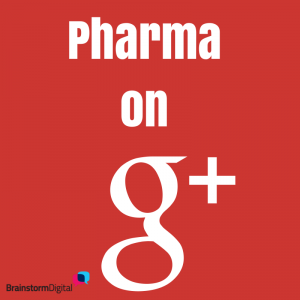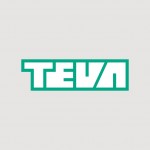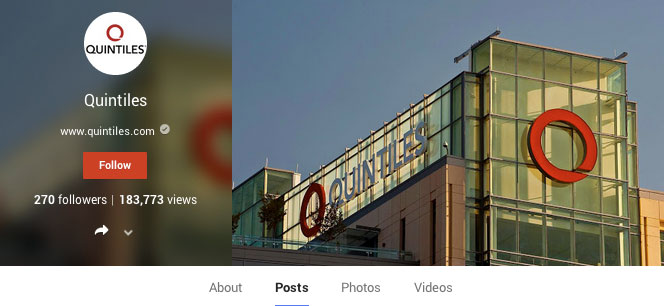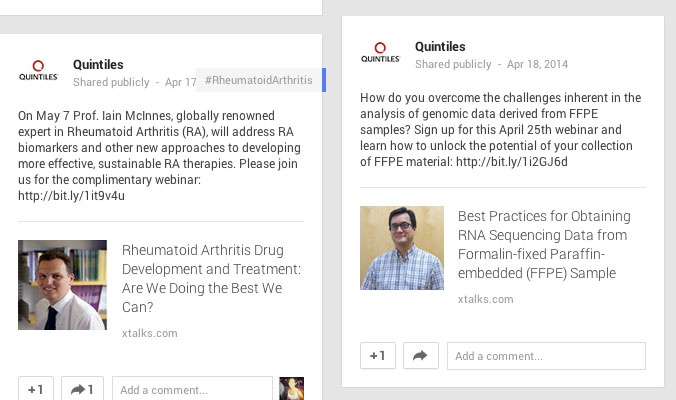Ok, ok, so it’s a bit of a trick question. No Pharma brand shines on Google+. In fact, it’s extremely difficult to find any Pharma companies with active Google+ accounts at all. The tiny number that are active have minute followings, a few hundred people at most.
Why are they not there? It’s probably unrealistic to expect an industry that is behind on social media in general to jump on a platform about which even seasoned social media marketers remain sceptical. Maybe they prefer to perfect Twitter and Facebook before they take on anything else.
Or perhaps they have backed off after watching Roche and Pfizer try and fail – although that was several years ago, before Google+ had really taken off.
But it seems like a shame, because Google+ is an increasingly popular platform, on which other brands have managed to thrive (see Cadbury’s 3.3 million followers, or Nike’s 2 million).
Google+’s circles feature, which allow a certain control over who sees your updates; the ability to disable comments; the hangouts and the SEO benefits of being active on Google+ – all this should make it an attractive platform for the sector. And frankly, with the pharmaceutical competition completely absent, any company that does take Google+ seriously will dominate at once.
So who should they emulate when they get there? Here are three examples of Pharma companies taking a stab at Google+. They all get serious points just for being there!
Teva
Perhaps the only large Pharma company to consistently devote resources to Google+. Its following remains embryonic – just 460 fans, compared to 9,200 likes on Facebook (but then again, not far below the 780 followers it has on Twitter – without ever tweeting a word).
By the standards of its competitors, it posts prolifically – once every 3-4 days – showing that it takes the platform seriously.
Its feed basically mirrors the content it puts on Facebook, which is a shame. Teva’s Google+ account does not really have its own identity yet, and many of the updates are focused more on Teva than on their users, and are a bit heavy, such as the posts announcing its financial results.
But there is lots of good content as well – interesting #ThrowbackThursday photos (which display particularly well on Google+, which is a very visual platform), posts showing Teva staff doing good works and having fun, some scientific information and inspiring quotes.
Teva makes good use of photos.
The tone is generally enthusiastic and warm, and they have had quite a few +1’s (the equivalent of a Facebook ‘like’).
Not a bad start.
Quintiles
Again, with 270 followers on Google+ compared to over 18,000 on Facebook (and that’s just its main account) and 10.6K on Twitter, its presence is negligible. But it posts every couple of days or so, so it is trying.
Its tone is a little more earnest than Teva’s, and its material even heavier – Quintiles seems to be using Google+ mainly to promote its webinars. Here I wish it did actually draw more on its material from the other platforms, just to get it started. Its Twitter feed is quite lively, and includes a lot of links to pieces on current pharma and scientific issues.
Why is it saving its most boring material for Google+?
One of the problems is that they have not learned to use the platform properly – linking to PMLive, for example, when the post one of its articles, or using more hashtags. To grow more quickly, they (and Teva) need to understand Google+’s unique attributes – and use them.
Idea Pharma
We’ve written before about Idea Pharma’s terrific LinkedIn company page, which is overwhelmingly visual, and makes good use of inspiring quotes.
In the last couple of months they have started becoming much more active on Google+, and are already showing signs of success. The visual nature of their material works beautifully on the platform, and as a result they have quite a few +1s – a sign of engagement!
Their material is also attractive because it does not heavily push or promote Idea Pharma, but rather talks about issues that might be of interest to their audience. Their tone is light and playful.
It will be interesting to see whether they start using some of Google+’s other features, interacting with communities for example.
They currently have nearly 160 followers on Google+, compared to 1,320 on LinkedIn, over 1,300 on Twitter and 4,800 on Facebook.
So can Pharma succeed on Google+? The jury’s still out, because even the few companies that are active on it are a bit half-hearted. If any of them did it properly, they’d quickly dominate.
Have we missed any examples of Pharma companies doing Google+ well? Do you think it’s a platform worth pursuing for Pharma? Let us know in the comments!













1 Comment. Leave new
Miriam,
Thank you, we are trying to gain traction.
I feel the approach is the same for each platform it’s just maintaining follow through and interaction. In time it could balance out with all of the platforms.
Perhaps we can follow each other, interact and learn what it really takes to build a following on G+.
In the mean time keep up the great writing & articles.
Regards,
Dominic
Google.com/+Curazene
Google.com/+DominicBrown